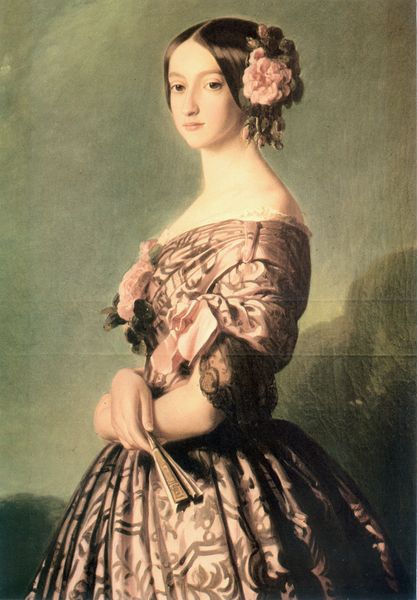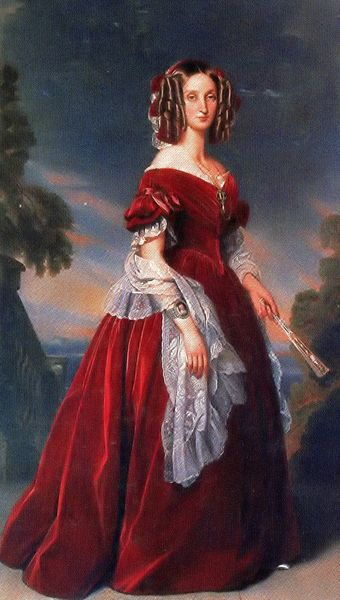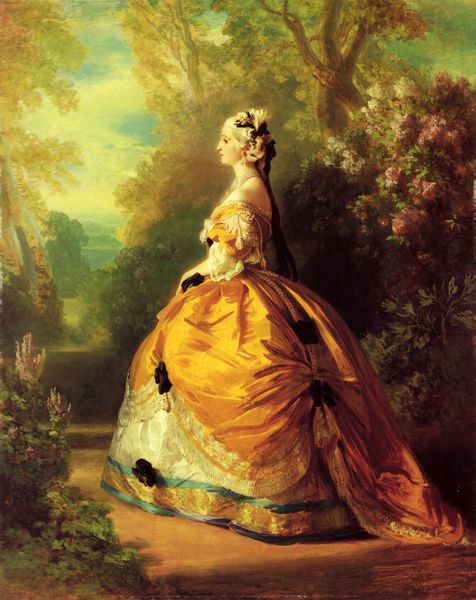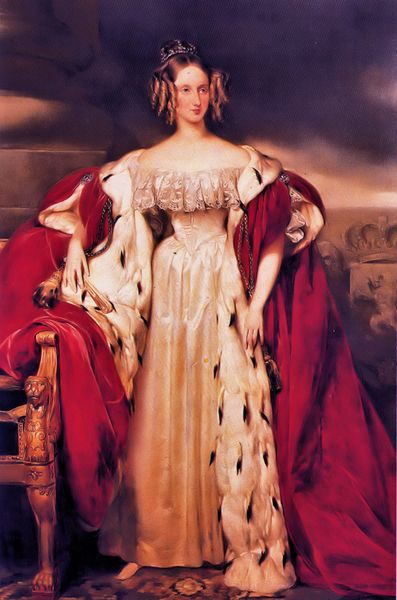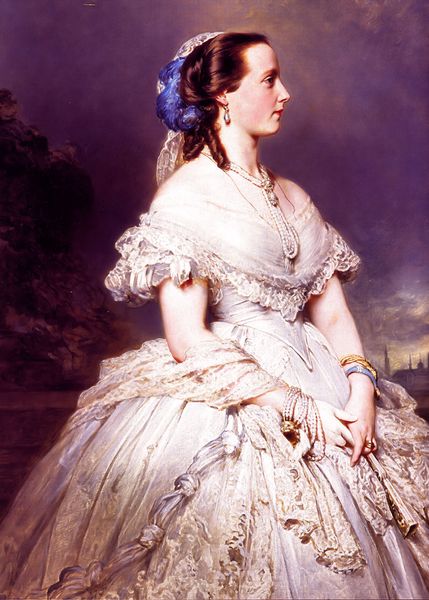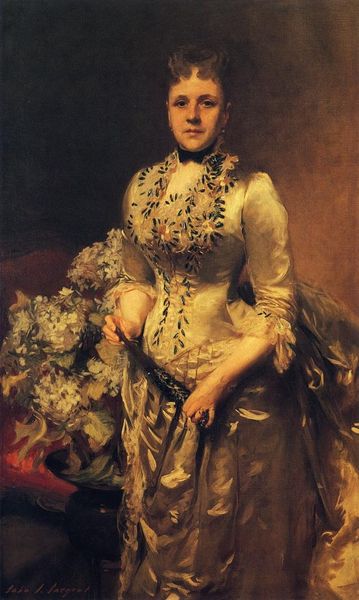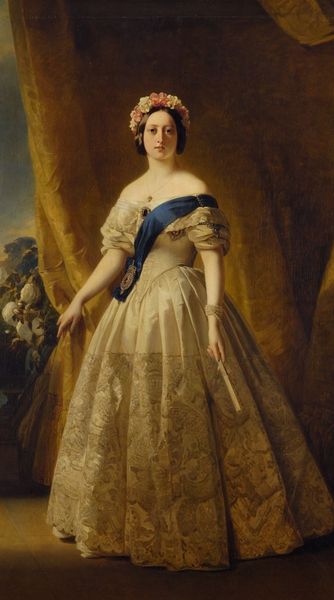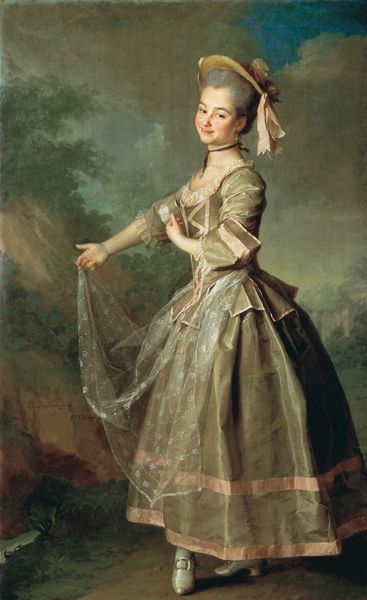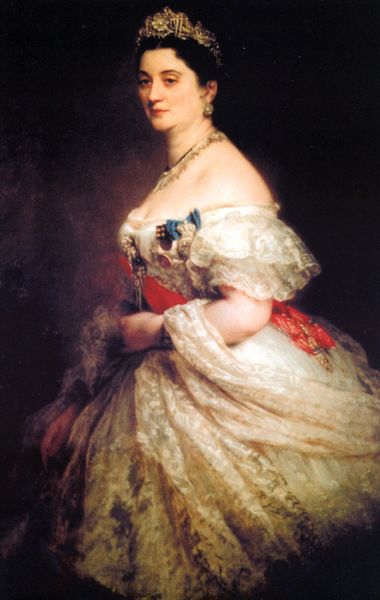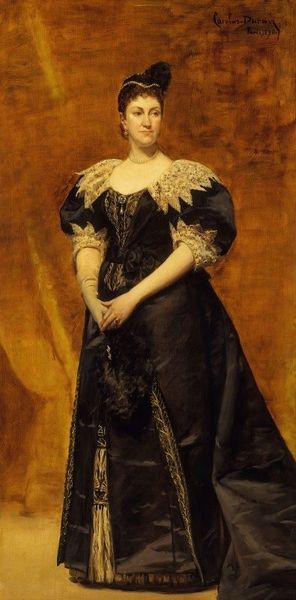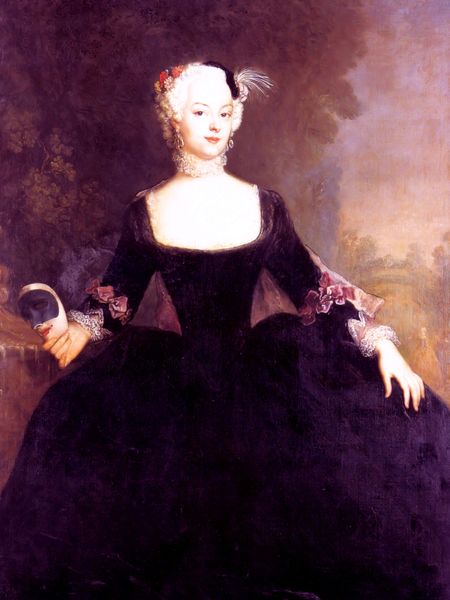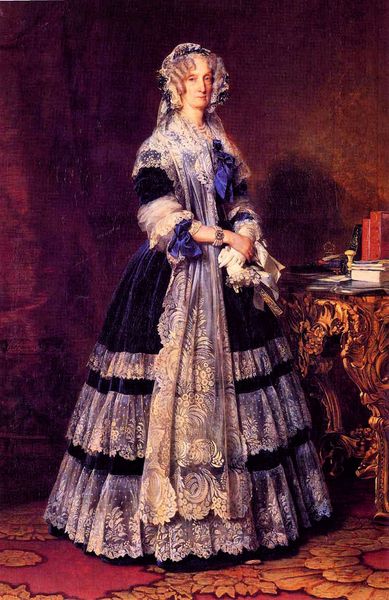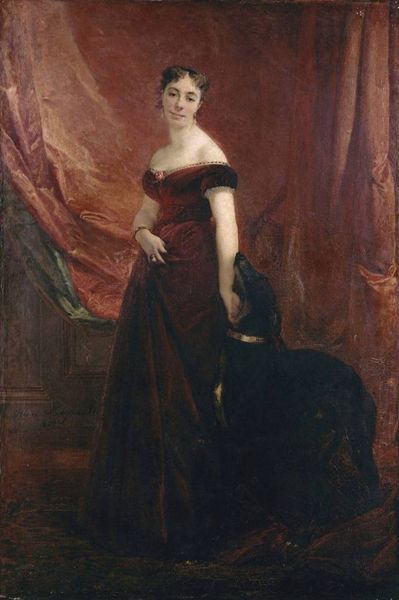
painting, oil-paint
#
portrait
#
painting
#
oil-paint
#
figuration
#
famous-people
#
costume
#
romanticism
#
costume
#
lady
#
female-portraits
Copyright: Public domain
Curator: This portrait, attributed to Franz Xaver Winterhalter, depicts Maria Carolina de Borbó Dues Sicílies. Although the precise date is unknown, the style and costume clearly place it within the Romantic period. Editor: Immediately striking is the dreamlike quality, perhaps induced by the diffuse light. Her posture exudes both regal composure and a slight melancholy. The color palette, dominated by dusty rose and mauve, adds to this subdued atmosphere. Curator: Indeed. Winterhalter, known for his portraits of European royalty, often used these atmospheric techniques. Examining Maria Carolina within the broader context of Bourbon family history provides valuable insights. We must consider her position and agency as a female figure in a deeply patriarchal power structure, and understand how art served as propaganda to display this power. Editor: Absolutely. But to what extent did Winterhalter challenge those power dynamics, or simply reproduce them? The rose she wears – ostensibly a symbol of beauty, love and grace – can simultaneously represent the suffocating constraints placed upon aristocratic women. The background almost becomes another character, this rather staged landscape and light reinforcing a fairytale that conceals harsher realities. Curator: That's an important nuance. Further exploration into feminist theory, particularly regarding performativity and identity, helps unravel those contradictions. She's presented as both powerful and contained, her identity a negotiation between self and social expectation. Editor: It reminds us of how the Romantic period loved that dichotomy! There's a political context, too – her position in the complex chessboard of European royal marriages. Considering the turbulent political landscape she inhabited, and its connection to shifting dynastic alliances, reframes the painting entirely. The political context helps deconstruct what these romanticized and classic female depictions meant at the time. Curator: Considering its subsequent reception is also critical. This work perpetuates certain aesthetic ideals but it must be constantly re-evaluated to account for critical viewpoints that were formerly dismissed in patriarchal art analysis. Editor: I agree, this painting operates on multiple levels. A moment of royal composure and a flashpoint for societal contradictions. Curator: Exactly. Thank you for adding that vital dimension to our understanding. Editor: It has been my pleasure. Thanks for shedding light on both the context of creation and its historical reverberations.
Comments
No comments
Be the first to comment and join the conversation on the ultimate creative platform.
